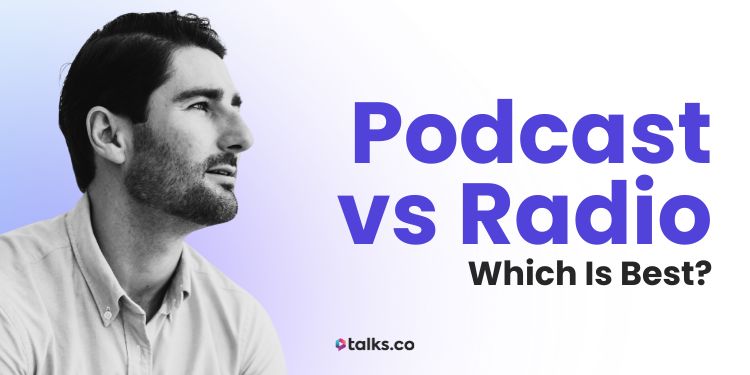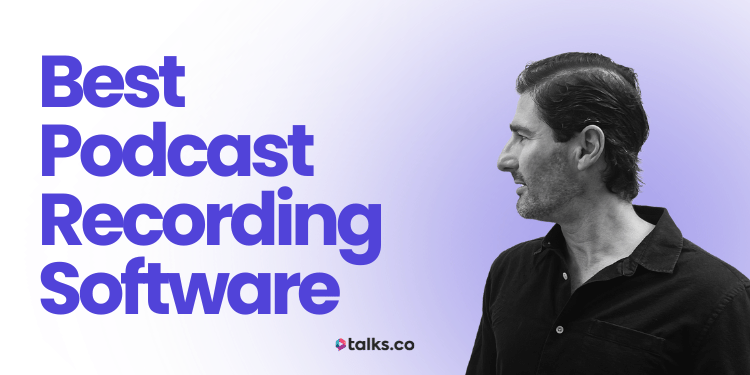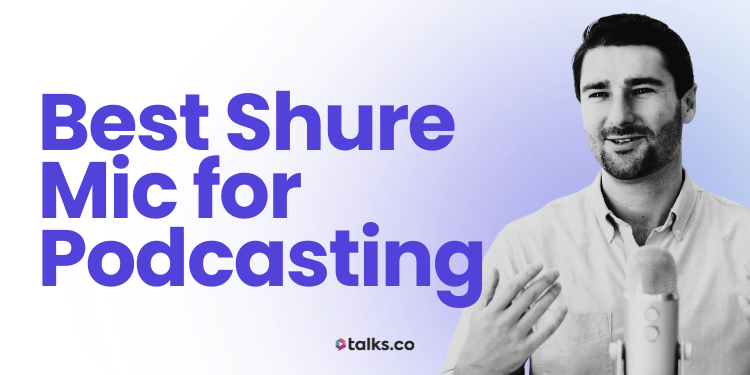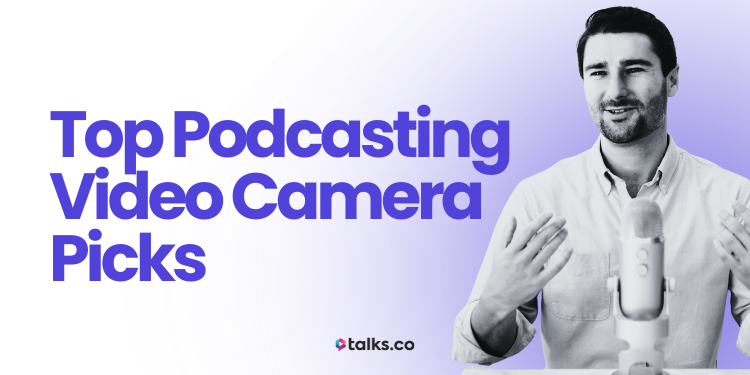You want to get seen. Heard. Known for what you do. But there’s one thing holding you up: podcast vs radio. Which one actually makes sense for you?
They sound alike. Both involve talking. Both have hosts. But how do they actually work, who listens, and how do you show up on each? That’s a different story.
I’ve done hundreds of interviews, been featured on shows across formats, and helped coaches, authors, and experts figure out where they’ll get the most traction.
The podcast vs radio decision isn’t just about what sounds cool. It’s about what fits your goals, your message, and how you want to show up.
This guide will teach you what radio shows and podcasts look like behind the scenes, how live radio and podcasts make money, how people who listen to podcasts find them, and how to choose the right one.
So, stick around. This podcast vs radio guide will make your next move a whole lot easier.
Podcast vs Radio Show: What’s the Difference?
Podcasts and radio shows both involve a mic, a voice, and a specific target audience, but they’re built completely differently, from how you create them to how people find and listen.
Here are the key differences between radio and podcasts:
Podcast
- Hosted and produced by individuals or teams, podcasts are pre-recorded often from home studios or laptops.
- You control the release schedule, decide what makes a good podcast topic, the length per podcast episode, and podcast monetization strategy.
- Great for niche audiences, evergreen content, and long-form conversations.
Radio
- Tied to radio stations and networks, with radio content and programming set in advance.
- Another key difference is you follow a fixed format and live broadcast time slot, often with FCC regulations.
- Designed for broader reach, real-time interaction with people who listen to the radio, and mass appeal.
Difference between podcast and radio
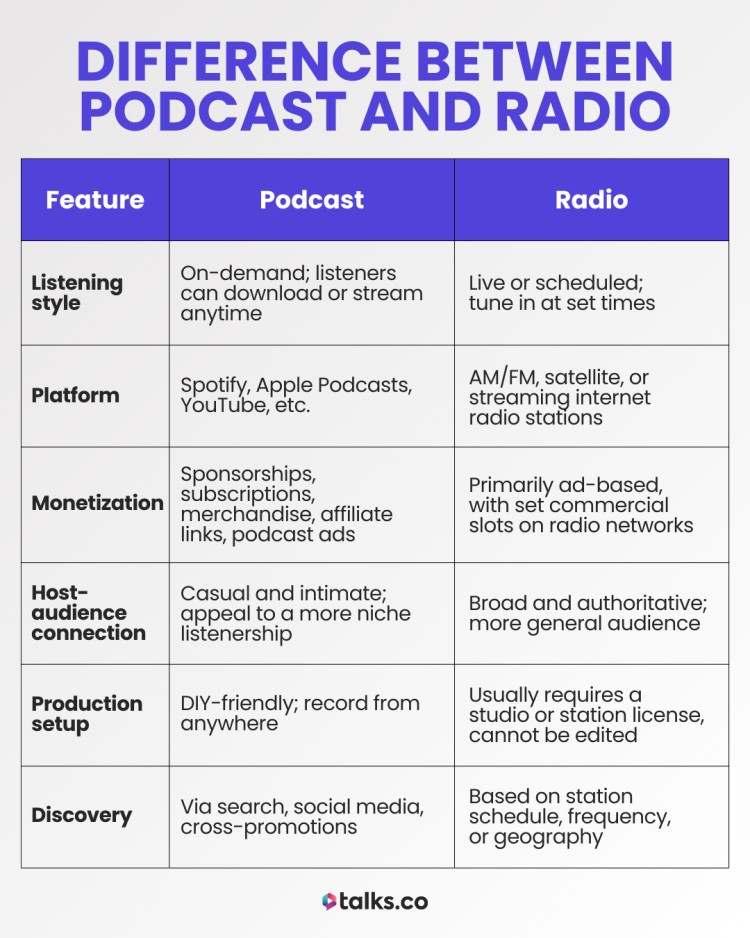
Here’s a quick table showing the major differences between podcasts and radio when it comes to listening habits, hosting style, and monetization:
| Feature | Podcast | Radio |
| Listening style | On-demand; listeners can download or stream anytime | Live or scheduled; tune in at set times |
| Platform | Spotify, Apple Podcasts, YouTube, etc. | AM/FM, satellite, or streaming internet radio stations |
| Monetization | Sponsorships, subscriptions, merchandise, affiliate links, podcast ads | Primarily ad-based, with set commercial slots on radio networks |
| Host-audience connection | Casual and intimate; appeal to a more niche listenership | Broad and authoritative; more general audience |
| Production setup | DIY-friendly; record from anywhere | Usually requires a studio or station license, cannot be edited |
| Discovery | Via search, social media, cross-promotions | Based on station schedule, frequency, or geography |
Podcast vs radio broadcast
This one trips a lot of people up: podcasts and radio broadcasts are not the same thing.
- Radio broadcast: Live or scheduled programming sent over the radio waves or through a digital stream. Think morning shows, call-ins, or news at the top of the hour.
- Podcast: Pre-recorded audio content and available to listeners whenever. Your podcast audience can pause, rewind, binge. No signal, no set time. It’s built around convenience.
In short: radio broadcasts push content on a set schedule. Podcasts let different audiences pull what they want, when they want.
Podcast vs radio statistics
How do podcasts compare to traditional radio? Here’s what the numbers say about audience size, listening time, monetization, and trust.
- Podcast reach: 98 million weekly listeners; 67% of Americans have tried one. (Statista, 2024)
- Radio reach: 88% of Americans (293 million) listen weekly. That’s more than the number of Facebook users. (Nielsen, 2021 / Edison Research, 2022)
- Radio listening time: 12.2 hours/week; highest among ages 50-64 at 14.6 hours/week. (Nielsen, 2021)
- Podcast loyalty: 56% listen to 1-3 shows weekly; 6% binge 10+. (Cumulus/Signal Hill, 2024)
- Gen Z radio audience: 55% tune in to AM/FM daily. (Edison Research, 2020)
- Radio ad spend: $36.1 billion globally; $12 billion in U.S. market. Average ad cost of $513.40 per 30 sec. (Dentsu, 2022; Statista, 2022; Gaebler, 2022)
- Listener influence: 77% trust radio host recommendations; 62% find podcast hosts likeable (42% credible). (Katz Radio Group, 2022; Nielsen, 2023)
Which format is right for you? (Quick checklist)
Still on the fence? Here’s how to decide and how to engage with both types of listeners.
Go with a podcast if you:
- Prefer creative freedom and full control over release and length.
- Want to build a niche or global audience slowly and steadily.
- Intend to monetize via sponsors, memberships, or affiliate income.
- Like the convenience of having pre-recorded content and want a low-cost setup.
Go with radio if you:
- Thrive in live and online radio formats and enjoy set schedules.
- Want instant reach to large audiences of radio listeners through an established station.
- Value the credibility of traditional media outlets.
- Don’t mind working under station rules and tighter formats.
What Is a Podcast?
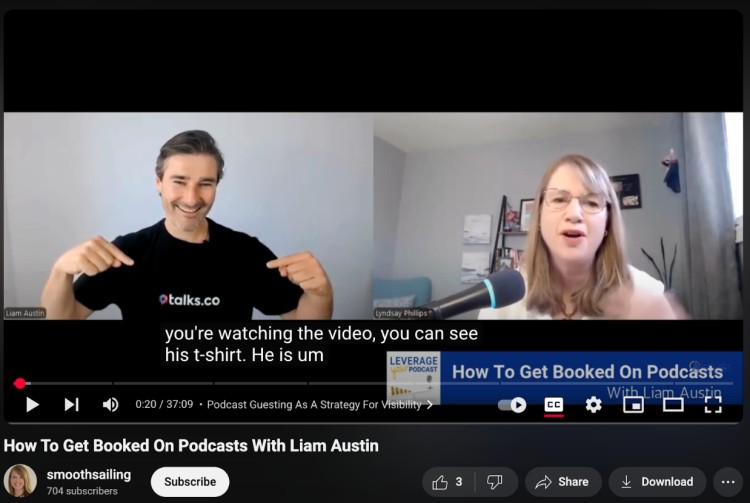
A podcast is a series of spoken audio episodes on a wide range of topics anyone can stream or download on demand making it accessible to listeners online forever.
Most people listen to different types of podcasts through apps like Spotify, Apple Podcasts, or YouTube. Some do a solo show in its entirety, some have guests, some feel like traditional radio, and some dedicated podcast shows are usually more off-the-cuff.
You’ve probably heard of:
- The Daily: News stories in under 30 minutes from The New York Times
- SmartLess: Interviews with celebrities, but less polished, more fun
- Crime Junkie: One of the biggest true crime shows out there
- Huberman Lab: Long-form science and health deep dives
- Call Her Daddy: Bold takes on relationships, pop culture, and more
The big difference?
Podcasts let listeners stream when and where they want (e.g., on a walk, at the gym, in the car). There’s no set schedule. No broadcast time. No signal. Just content, ready when your podcast fans are.
You don’t need the most expensive podcast equipment bundle or the best laptop for podcasting either to record a podcast.
Most podcasters do it at home with simple gear that fits on a desk. That makes it way cheaper to start your own podcast, especially if you want control over how and when you create.
Is podcast audio or video?
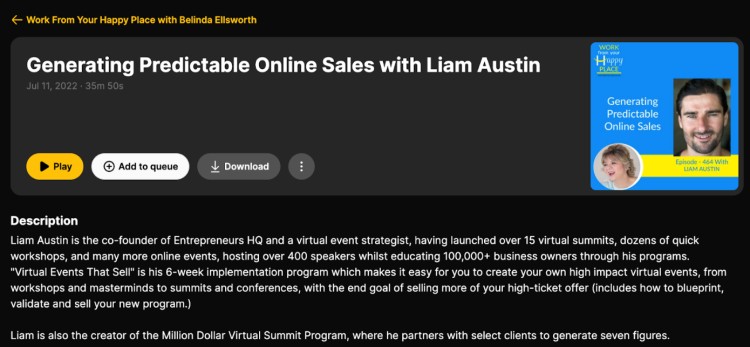
Most people think of podcasts as audio-only, and that’s still the standard. But a lot of creators are recording video versions too, especially if they’re publishing to YouTube or using clips for social.
It’s not required, though.
Audio-only podcasts are still the most common and easiest to produce (especially with the best podcast recording software). If you’re not keen on being on camera or just want to focus on the message, sticking with audio is totally fine.
Is a podcast a talk show?
Some are, but not all. Podcasts come in loads of formats like interviews, solo rants, roundtables, narrative storytelling.
If your show involves conversations, guest interviews, or commentary, then sure, it can feel like a talk show. But it’s not limited to that.
That’s a big part of what makes a good podcast. You’re not boxed into a format or style. You can shape it around what works for you and your audience. Plus, you can record a podcast remotely any time.
Why podcasts are popular
Podcasts have blown up because they fit today’s busy lifestyle and put listeners in control. Here’s why people keep coming back:
- It’s listener-led: People tune in on their own time, on their own terms. No schedule, no signal, no rules.
- Diverse content: From true crime to coaching tips, there’s a podcast for almost every interest.
- Strong host-listener trust: 62% of listeners describe podcast hosts as likeable, and 42% say they’re credible. (Nielsen, 2023)
- Low production barrier: Anyone can start a podcast with simple gear. That means fresh voices and ideas.
- High device flexibility: 62% of smart speaker users who stream podcasts also listen to radio. (MRI-Simmons, 2024)
- Brand-friendly: Podcast listeners trust what they hear and take action. Many brands are shifting more ad dollars into podcasting for this reason.
What Is a Radio Show?
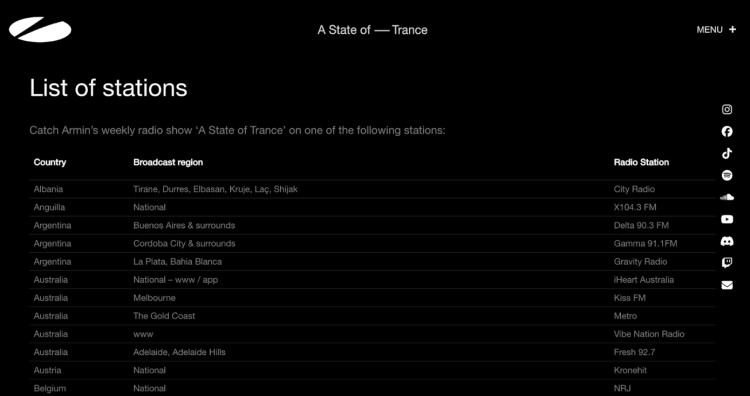
A radio show is a live or scheduled audio program that’s broadcast over the air or streamed online through a station. It usually runs at a set time, follows a specific format, and is tied to a network or station.
You’ll hear music, news, interviews, or talk segments depending on the station’s focus. And unless it’s syndicated or recorded, once it airs, it’s gone. If you miss it, you miss it.
Radio works best for people who want to go live, reach local audiences, or tap into existing broadcast platforms.
But it’s not as flexible or evergreen as podcasting.
Is a podcast a radio format?
No, podcasting is not a radio format.
- Licensing: Radio needs station agreements; podcasts do not.
- Format rules: Radio shows follow strict airtime and content rules; podcasts can go as long as needed.
- Regulation: Radio falls under broadcast law and the FCC. Podcasts do not.
5 Radio podcast examples
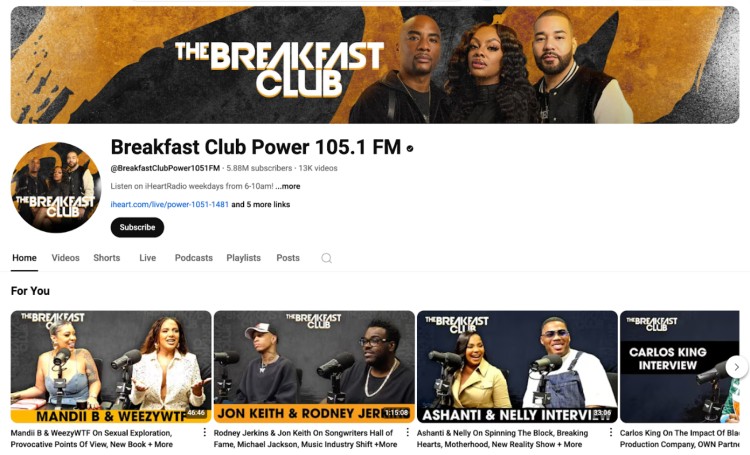
Some of the biggest podcasts started as radio shows (or still are). They just doubled their reach by going on-demand. Here are a few that nailed the crossover:
- Fresh Air (NPR). Started on public radio in 1985. Now one of the most downloaded interview podcasts around.
- The Breakfast Club. Launched in 2010 on New York’s Power 105.1. Now huge on YouTube and podcast platforms, especially for hip-hop and culture interviews.
- The Dave Ramsey Show. Began as a radio program in 1992 as The Money Game. Now one of the top personal finance podcasts. Same content, two mediums, and on-demand.
- This American Life. Started on Chicago Public Radio in 1995. Became a podcast in 2006 and helped set the bar for narrative audio storytelling.
- BBC Global News Podcast. Based on BBC World Service broadcasts. Repackaged as a daily podcast with updates and headlines from around the world.
Podcast vs Broadcast Meaning
These are the key differences between podcast shows and broadcast media:
- Broadcast means live content (radio or TV) sent to a wide audience at the same time.
- Podcast means on-demand content uploaded online for people to listen on their own time. No signal. No set airtime. No waiting.
So while both are audio-based, podcasts aren’t “broadcasts.” They’re flexible, creator-owned, and listener-driven.
Is a podcast a broadcast media?
No, podcasts are not traditional broadcast media that typically appeal to a mass audience.
Broadcast means sending something live over the airwaves or cable at a specific time. Podcasts skip the live part. They live online, ready whenever you want to tune in.
So even if many podcasts feel like radio shows, they don’t broadcast live or on a fixed schedule. That’s what makes them flexible and perfect for today’s on-the-go listeners.
Time to Make Your Move
Podcast vs radio isn’t just a tech split. It’s a call on how you want to be heard, build trust, and grow your brand.
Radio has reach, legacy, and structure. Podcasting gives you control, long-term content, and direct access to niche listeners on your terms. One’s built for broadcast. The other’s built for connection.
If you’re leaning towards a podcast, there’s no better time to start.
Create your free Talks Creator Profile and start getting discovered by podcasters looking for guests like you.
It’s fast, it’s free, and it puts you in front of the right listeners without needing to pitch anyone cold.
Create Your Free Talks Creator Profile Right Now
